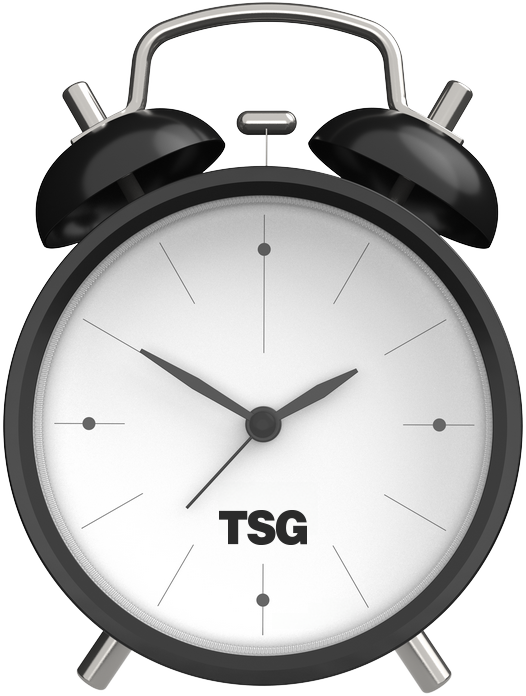AI-powered scheduling tools like Motion and Calendly optimize your meeting arrangements, slashing the time you’d usually spend setting them up. They seamlessly sync with apps like Google Calendar and Outlook, ensuring conflict-free appointments. Plus, they offer intelligent suggestions based on your availability, making the whole process smooth and efficient. Imagine more productive days using intuitive products designed for effortless coordination.
Discover how AI scheduling and optimization tools use video demos and images of dashboard analytics to streamline setup and boost productivity.
Understanding AI Scheduling Assistants
As you navigate the complexities of daily scheduling, AI scheduling assistants can greatly streamline your calendar management. These assistants interpret plain text inputs using natural language processing to create accurate event entries. Also, automate the meeting scheduling and task management process, markedly cutting down the time you spend organizing your day. With seamless integration and access to scheduling information, such as shared calendars and project updates, they optimize time management by preventing scheduling conflicts and double bookings.
AI scheduling assistants leverage smart scheduling algorithms to analyze your availability and preferences, offering personalized scheduling suggestions. This means you’re less likely to face the headache of overlapping meetings or forgotten tasks. By understanding and utilizing these AI tools, you can transform how you manage your calendar, making every day more efficient and less stressful. With access to relevant information, such as project files and team availability, these tools prevent conflicts and save time.
Key Benefits of AI-Powered Scheduling Tools
AI-powered scheduling tools offer significant advantages, starting with time-saving automation. Interactive images and dashboard visualizations allow users to quickly assess meeting coverage and calendar balance. Access to real-time videos and onboarding content on social media platforms like YouTube enhances user adoption and team collaboration. These tools guarantee conflict-free calendar coordination and improve productivity by integrating smart insights and suggestions for ideal meeting times.
Time-Saving Automation
When considering the benefits of AI-powered scheduling tools, the time-saving automation stands out prominently. You’re likely aware that these tools shave 10 to 15 minutes off your scheduling time per meeting by reducing the endless back-and-forth emails. Thanks to intelligent algorithms, AI scheduling tools minimize disruptions like scheduling conflicts and double bookings. They keep your calendar in check, ensuring task organization and streamlined productivity.
What’s more, automated reminders and real-time availability suggestions foster better team collaboration. You can adjust seamlessly to shifting priorities and balance work commitments and personal life. Fundamentally, these tools don’t just schedule meetings; they optimize your entire workflow, helping you work smarter, not harder.
Conflict-Free Coordination
While AI-powered scheduling tools streamline your workflow, their ability to coordinate meetings without conflicts enhances your productivity. By integrating with your existing calendars, these tools guarantee real-time availability and manage time zone differences seamlessly. This conflict-free coordination leverages smart algorithms that predict and prevent scheduling conflicts efficiently.
| Feature | Benefit |
|---|---|
| Time Zone Management | Automatically adjusts for global participants |
| Real-Time Availability | Reflects up-to-date calendar entries |
| Automated Reminders | Reduces no-shows with timely notifications |
| User Preferences | Suggests ideal meeting times based on habits |
AI scheduling tools use these features to provide efficient coordination, guaranteeing that you don’t waste time resolving calendar conflicts and can focus more on what matters.
Enhanced Productivity Insights
Beyond merely avoiding scheduling conflicts, AI-powered tools also reveal deeper insights into how you manage your time, enhancing your overall productivity and development. Here’s how you benefit:
- Real-time Availability: AI scheduling tools sync with your calendar, offering suggestions that avoid back-and-forth emails and save you 10-15 minutes per meeting.
- Time Allocation Analytics: Understand your productivity patterns better and make informed decisions to optimize your daily routines.
- Automated Reminders: These tools send notifications to keep you on track with your commitments, enhancing communication and accountability.
- Adapting to Priorities: AI tools adjust to your changing needs, helping you balance professional and personal life, thereby boosting your work-life satisfaction.
Embrace these tools for more streamlined meeting scheduling and a happier, more productive life.
How AI Scheduling Enhances Team Collaboration
AI tools greatly streamline team collaboration by automating the scheduling process, slashing the time spent coordinating suitable meeting times. With AI scheduling, you’re not just setting up meetings but optimizing team interactions. Automated scheduling reduces meeting conflicts and double bookings, letting everyone focus on the work that matters. Integrated calendars mean you can see real-time availability at a glance, making the process more efficient.
AI tools also analyze productivity patterns using visual models and dashboard images, identifying team-wide improvements to suggest the best times for gatherings, enhancing overall team engagement. Plus, automated reminders keep everyone on track without requiring manual follow-ups. This keeps your team aligned and maximizes collaboration during each meeting, ensuring no one’s time is wasted.
Integration Capabilities With Other Software

You’ll find that AI scheduling tools don’t just stand alone; they’re often integrated with your favorite software. Tools can extract relevant text or information from meeting notes and sync it with platforms like Notion or Google Docs. This means you can enjoy cross-platform synchronization, streamlining your calendar and communications across tools like Google Calendar and Slack. Plus, they enhance your workflow automation and guarantee smooth data sharing between different applications, making your scheduling hassle-free.
Cross-Platform Synchronization
As you explore the capabilities of AI scheduling tools, you’ll find that their ability to integrate with platforms like Google Calendar, Outlook, and Slack is pivotal. Here’s how cross-platform synchronization benefits you:
- Seamless Synchronization: Changes in one calendar automatically update in all others, avoiding scheduling conflicts.
- Time Zone Intelligence: AI scheduling assistants adjust meeting times for participants across different time zones, simplifying the coordination for remote teams.
- Comprehensive Integration: Integrate scheduling capabilities with project management tools through platforms like Zapier, enhancing overall workflow.
- Customization: Customizable APIs allow for tailored integration into your existing systems, improving operational efficiency.
This integration guarantees that your scheduling tools work in harmony, streamlining your processes across various platforms.
Automation Workflow Enhancement
When AI scheduling tools integrate with applications like Zapier, they sync your meetings across calendars and automate repetitive tasks, greatly boosting your workflow efficiency. Imagine how seamless your day becomes when your AI scheduling assistant handles meeting invitations and coordinates with project management tools like Asana. This automation workflow enhancement guarantees you’re always on top of your tasks without manual intervention. These innovations are backed by ongoing research into productivity and behavioral scheduling.
| Tool | Integration Capability | Benefit |
|---|---|---|
| Reclaim AI | Integrates with Google Calendar | Streamlines meeting management |
| SkedPal | Connects with Outlook | Optimizes scheduling efficiency |
| Trello | Syncs tasks with AI tools | Enhances workflow efficiency |
| Slack | Sends automatic reminders | Streamlines communication |
These integrations optimize business workflows and free you up for higher priorities.
Data Sharing Protocols
Given the importance of efficient data exchange, AI scheduling assistants have robust integration capabilities that empower seamless collaboration across multiple platforms. You’ll appreciate how these tools centralize scheduling and enhance your team’s productivity. Here’s how:
- Automated Tasks: Integrate with tools like Zapier to automate repetitive responsibilities, freeing you up for more strategic activities.
- Calendar Syncing: Connect seamlessly with popular calendar applications like Google Calendar and Outlook.
- Enhanced Collaboration: Link with productivity tools like Slack and Microsoft Teams to streamline communication and task tracking.
- Custom Solutions: Leverage APIs for custom integrations, tailoring solutions to your business needs.
These features simplify data sharing and guarantee real-time updates and effective conflict resolution.
Exploring Popular AI Scheduling Tools and Their Features

Steering through the world of AI scheduling tools can considerably streamline your calendar management. Tools like Motion and Reclaim automate the scheduling process and integrate seamlessly with platforms like Google Calendar. Thanks to natural language processing used by Scheduler AI, they prioritize tasks and reduce the need for endless back-and-forth emails.
Calendly and Clara flaunt user-friendly interfaces that help you share your availability effortlessly, minimizing scheduling conflicts. Trevor AI’s intelligent time blocking is invaluable for those who juggle multiple tasks, ensuring you allocate ideal times for functions while maintaining a professional appearance. Clockwise and Kalendar AI also offer analytics features that provide insights into your time allocation, helping you enhance schedules and boost productivity.
The Role of Automation in Modern Work Environments
As companies seek greater efficiency, automation in modern work environments significantly reduces administrative overhead. With AI in the mix, you’re not just scheduling meetings but optimizing your workflow. Here’s how:
- Productivity Boost: AI tools reduce time spent on meeting scheduling by 10-15 minutes, reallocating this to strategic tasks.
- Conflict Resolution: Algorithms minimize scheduling conflicts and prevent double bookings.
- Efficient Time Management: Automated tools adapt schedules based on your priorities, enhancing workflow.
- Enhanced Collaboration: Automated reminders and smart scheduling facilitate better collaboration, especially critical in remote work settings with varying time zones.
Embrace these tools to streamline your operations, ensuring you’re always ahead in this fast-paced world.
Best Practices for Effective Use of AI Scheduling Assistants

Building on the importance of automation in modern work environments, it’s crucial to understand how to maximize the efficiency of AI scheduling assistants. Start by clearly defining your scheduling preferences and availability. This step helps AI tools enhance meeting times, reduce conflicts, and improve time management. Regularly update your calendar events to avoid double bookings and verify that the AI has accurate data. Use reminders and notifications to keep track of your commitments, boosting your punctuality and organization.
Explore analytics to understand your productivity patterns and make informed adjustments. Stay open to AI’s personalized models that suggest times based on your past behaviors and keyword usage from prior text logs, guaranteeing you’re always set up for success.
Future Trends in AI Scheduling Technology
While the landscape of workplace technology constantly evolves, AI digital tools are poised for significant advancements. Here’s what you can expect:
- Enhanced Personalization: AI scheduling will adapt to your unique productivity patterns and preferences through advanced machine learning algorithms, offering personalized scheduling like never before.
- Immersive Meeting Environments: Emerging technologies, such as VR and AR, will integrate with AI scheduling to enable meetings in immersive environments, enhancing collaboration across global teams.
- Smarter Time Zone Handling: As remote work expands, AI tools will better manage time zone differences, ensuring seamless coordination.
- Intuitive Interaction: Improvements in natural language processing will allow you to communicate with your AI scheduling assistant more naturally, making it as easy as chatting.
Assessing the Impact of AI Scheduling on Business Productivity

Given AI scheduling assistants’ significant time savings—averaging 10 to 15 minutes per meeting—it’s clear these tools are revolutionizing business productivity. By automating scheduling, you’re not just cutting down on needless emails but avoiding scheduling conflicts and double bookings. This shift means you can focus more on what matters—your core business tasks.
Additionally, this automation leads to higher customer satisfaction due to more reliable and timely interactions. As AI evolves, more personalized scheduling and real-time adjustments are expected, further bolstering workplace collaboration and productivity. You’re not just keeping up; you’re setting the pace in a fast-moving business world.
Frequently Asked Questions
What Is the Best AI Scheduling Tool?
You’re asking about the best AI scheduling tool, and the answer depends on your specific needs. If seamless integration and task prioritization are key, Motion is excellent. For smart, adaptive scheduling, Reclaim.ai is your go-to. Prefer simplicity and reliability? Calendly is incredibly user-friendly. If you need smart time blocking, consider Trevor AI. For a tool that effectively mimics human coordination, Clara is a fantastic choice. Choose based on your priorities.
What Is the Best AI for Meetings?
You’re looking for the best AI for meetings? Motion stands out due to its combined calendar management and task prioritization, automating scheduling while considerably cutting down on manual planning time. It schedules meetings efficiently and tracks projects, making it ideal if you’re juggling multiple tasks. Its analytics can help you refine your meeting schedules and boost overall productivity, ensuring you’re making the most of your time.
With Motion, you can seamlessly integrate AI tools for meeting management that consider your preferences and team dynamics, ensuring that every meeting is purposeful and productive. Its user-friendly interface simplifies finding suitable time slots, reducing the back-and-forth often associated with scheduling. As a result, you can focus more on the content and outcomes of your meetings rather than the logistics, enhancing collaboration within your team.
How Artificial Intelligence Is Used in Scheduling?
You’re likely curious about how artificial intelligence aids in scheduling. AI automates your calendar by learning your preferences and availability patterns. It adjusts for time zones and integrates with your existing apps, ensuring you’re never double-booked. Plus, with its ability to understand natural language, you can set up meetings through simple messages. AI not only saves you time but also greatly reduces the hassle of coordinating with others.
Does Microsoft Have an AI Scheduler?
Yes, Microsoft does have an AI scheduler. You’ll find this feature in services like Cortana and Outlook. Cortana can manage your calendar and set reminders, while Outlook’s FindTime helps you pinpoint the best meeting times by checking everyone’s availability. Additionally, Microsoft Teams integrates with Cortana for even smoother scheduling directly within the platform, making it easier for you to coordinate with remote teams.
Conclusion
AI tools no longer automate — they visualize. With support for images, linked videos, and personalized models, tools like ChatGPT OpenAI represent the next phase of intelligent product design. By integrating with other software, these tools save you time and enhance your productivity. Embrace the automation they offer, and stay ahead by adopting the latest AI scheduling innovations. Remember, using these tools effectively requires knowing their features and following best practices. These smart solutions will evolve as you move forward, making your work life even more efficient.




















